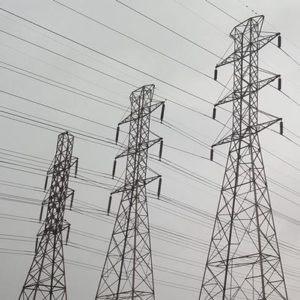Welcome Back, Enphase, To The Realm Of The Possibly Profitable

By Frank Andorka, Senior Correspondent What Happened:Reviews of Enphase’s Q1 2018 continue to be unusually positive, signaling that maybe its financial struggles may be receding in the rearview mirror. Roth Capital continued to cheerlead from the sidelines after switching the company’s stock to a “buy” in February. And the North Bay Business Journal breathlessly reported that Enphase may finally be on the brink of profitability. SolarWakeup’s View: For me, this is a nice-time story. [wds id=”3″] Enphase was one of the first companies with whom I met when I first joined the solar industry in 2011. Their microinverter was creating … Read More
This is your SolarWakeup for April 17th, 2018
Solar Is Big Money. In 2018, the global solar market is going to top 100GW. That means more than $100 billion in total capital was committed to the market for 20 years of solar cashflows. In the US we likely stayed north of $20billion last year which is impressive on its own but we are getting to the point that global investors see the safety of the solar investment. There is still plenty of risk allocated to the market and room to lower the cost of capital. The margins remain on the pipeline side of the ledger, if someone can put land, interconnection and revenue together, they have created the value that will get them paid.
The Big Lyft. Lyft is targeting 1billion self driving electric vehicle rides by 2025, annually. Maybe that explains why Google’s energy director, Sam Arons, recently joined Lyft as the Director of Sustainability. Sam was often on the solar circuit talking about Google’s energy strategy and how the company would get to 100% renewable energy. I can only surmise that Lyft is thinking that the billion electric rides need to be powered with renewable energy. A corporate deal for a fleet of EVs?
Time For Retail Choice. Rocky Mountain Institute is out with a consumerism report using Green Mountain Power as the case study. The broader story here is the intermediate step before monopoly markets are deregulated and that is retail choice. This would be the allowance of third parties to serve as retail providers to consumers that wanted to enter into short term contracts for energy for the product and price they are willing to pay. Like picking a cable provider but for energy. Some legislation has been floating for this and gets pushed back quite a bit but it would be a great step forward if there is more traction on this issue.
Tuesday’s Mailbag. Thank you to the tremendous feedback about my comments from yesterday, which Frank covered in more detail. This reminds me of the arguments I was having with SEIA back in 2014 when SEIA wasn’t sure that it would support an ITC extension (yes, that happened) because some members weren’t supportive. It took the Solar Pledge and some marketing to get SEIA on board with the ITC extension and in this case it will take your voices to stop utilities from being members at SEIA, even as non-voting members. As I’ve urged those that have emailed me, make sure you let SEIA know how you feel.
Forest Through The Trees. This appears to be a bit of a scrivener’s error or at worst a silly way to stop distributed generation in California. EDF does a good job in shining the light on this.
News
Opinions:
Have a great day!
Yann
Cigarette Companies To Exxon Execs: Damn, Sucks To Be You!

By Frank Andorka, Senior Correspondent What Happened: Massachusetts’ Supreme Judicial Court told Exxon it couldn’t hide evidence it knew about global climate change (and its role in producing it) for years before they admitted it. The ruling crushed Exxon’s hopes of keeping the information from the state’s attorney general, Maura Healey, who is currently investigating the company’s alleged history of climate perfidy. As Think Progress notes, “In January 2017, a Massachusetts Superior Court judge ruled Exxon must comply with Healey’s investigation and turn over 40 years of documents on climate change. Exxon appealed. SolarWakeup’s View: When you’re getting sympathy cards … Read More
Here’s What Happens When Utilities Rule The Roost

By Frank Andorka, Senior Correspondent What Happened: This is going to shock a lot of you, but utilities would like the solar industry to stop harping on net metering and move to what they call “rate design.” K Kaufmann, communications manager for the Smart Electric Power Association (the utilities’ arm of the solar discussion) (SEPA), lays out the case for why moving the conversation away from net metering will help utilities. Oddly, however, it doesn’t explain why there would be any advantage to the solar industry to move off net metering. SolarWakeup’s View: Sometimes, the jokes write themselves. [wds id=”3″] … Read More
This is your SolarWakeup for April 16th, 2018
SPI Host Says, Forget Net Metering. Rate design is a false flag meant to lure solar advocates into a discussion of how we move into a large solar integration conversation. By changing the conversation from simple net metering to a complicated discussion about fixed charges, SEPA is saying to you, forget net metering. Last year ~3GW was distributed versus almost 10GW in utility scale. Gutting net metering is a fight to take energy choice away from the largest source of energy demand, the buildings across America so that more rate base can be invested. The larger point is that almost $4million from the trade shows we all attend goes to fund this rhetoric and I’m a bit tired of the status quo. Fighting for net metering means that all solar has a chance and grows across all of the value chains and we can’t have half of our trade show money going to values that don’t align with 90%+ of the solar industry because what does it say about our values if we don’t spend it on likeminded ventures.
A Runaway American Dream. The era of Chris Christie is over, Governor Phil Murphy is in the house now! NJ is going big with an enhanced RPS, SREC fixes and a community solar program. All of that on top of the PJM market will likely create some new development opportunities in Jersey. I look forward to seeing how this plays out over the next few years.
Exhibit A. For the past week, you (the readers) have been clicking on the South Carolina story of the day which caused Frank to have to cover the daily play by play. That’s the interesting part of the second story, we don’t control the topic, you do! But look at what happened in South Carolina where solar advocates, including Sunrun which has been reaching across the proverbial aisle as much as anyone, asked for a cap increase while utilities were busy losing billions on unbuilt power plants. After losing the vote, utilities pushed for a crazy rule that required the NEM cap increase to be approved by 2/3 of the House. What picture am I missing?
Exhibit B. Germany had a renewable energy auction and solar won all of the contracts with an average rate of 4.67 euro cents per kWh. In dollars that’s about 6 cents per kWh and Germany doesn’t have an ITC and has higher income taxes. Germany also has a similar irradiance level as Washington State or Southern Alaska. That’s the problem with ratebased solar power, the private sector can do the exact same thing but better and cheaper without a double digit return. If I were a regulator, I would require any rate based renewable energy or energy storage to have to compete with an open RFP. Get the picture?
Exhibit C. Here’s the bigger picture. (TL;DR) The monopoly system doesn’t work anymore. The market is moving on to consumer and retail choice. Produce your own, procure responsibly; cheaply or do nothing and go with the wires provider. Nuclear is a good example, the utility sector is pushing to build new and consumers through legislators supported this. Then it required money so they approved advanced cost recovery. Then the delays happened, bankrupt suppliers and whistleblowers. Now solar with storage is less than 5 cents per kWh in sunny areas. Time to move on and let the market handle the 21st century. Picture that.
News
Opinions:
Have a great day!
Yann
Are We Harping On South Carolina Net Metering? Yes, Because YOU Are

By Frank Andorka, Senior Correspondent What Happened: John Tynan, executive director of the Conservation Voters of South Carolina, penned an excellent op-ed for The State, expressing his … disappointment with the decision by the legislature to smother the solar industry in its crib by not removing South Carolina net metering caps. Some choice quotes: “H.4421 would have saved more than 3,000 solar jobs and ensured that the South Carolina solar industry will continue to thrive.” “It’s clear utilities will stop at nothing to continue to keep making profits. And when customers install solar panels, utilities lose revenue.” “… the utilities … Read More
Back To The Future: New Jersey Starts Its Solar Return

By Frank Andorka, Senior Correspondent What Happened: The New Jersey legislature yesterday passed two bills – one in the House and one in the Senate – designed to jumpstart the state’s solar industry by: increasing the overall RPS to 50 percent by 2030 enabling a community solar program shutting down its problematic sREC program reducing the overall cost of the current solar Renewable Portfolio Standard (RPS) by lowering the Solar Alternative Compliance Payment. SolarWakeup’s View: New Jersey has been quietly fuming as New York leapfrogged over it as a progressive state in the race for solar leadership. Well, yesterday, the … Read More
This is your SolarWakeup for April 13th, 2018
We Want Solar. We’ve gotta stop being surprised when we see polls that show Americans wanting more solar. This isn’t just an environmental decision, it’s also one of control of cost and of self-reliance. A poll would likely show Americans preferring to disconnect from the grid but that’s a different topic. In a Q&A with Dan Rather last night, the first question came about science and climate change which makes me wonder where we fall short in spreading our message. A few years ago, a leading solar advocate told me that it doesn’t matter how much money solar has in its coffers, it would never win based on spending or campaign donations. Solar wins because of the people on the Capitol steps and marches in front of the PUC. I can’t help but think that all of these conversations we’ve had over the past few weeks about money vs values, that this advice is as true as ever and these polls are proof of that. Open the tent, it doesn’t have to be gold plated.
Solar Moves To EV Charging. GM is signing a deal with EVgo to get more fast charging done. EVgo is an interesting story with notable solar ties. EVgo was acquired from NRG, post David Crane, by Reuben Munger’s investment firm, Vision Ridge. Since then, in recent months, solar veterans Cathy Zoi (DOE, Silver Lake, SunEdison) and Julie Blunden (SunPower, SunEdison, CalCEF) have joined the company.
Do You DER? It seems that a gathering workshop on the FERC 841 order has attracted quite the attendees. Were you there? What was your takeaway?
Vehicle To Grid. Using your EV battery for distributed resources seems like a strange way to use an expensive battery in your car, causes all sorts of issues to the lease transaction and makes non-energy professionals have to trust a new market. Some companies are road testing this technology and I can see how this could work in the future. My guess is it happens in some fashion at some point.
MidWest Solar, Illinois. The Land of Obama is finally going solar (and other RE/EE). I am extremely bullish on early stage development in that region and see opportunities for all segments of this market. The politics could play well, as well as politics in Springfield could look at least. We will be announcing our dates and agenda for the Illinois event shortly, stay tuned.
News
Opinions:
Have a great day!
Yann
EVs Will Start School Later This Year

By Frank Andorka, Senior Correspondent What Happened: Blue Bird Corporation, whose iconic logo you’ve probably seen on a school bus near you, is diving bravely into the future by unveiling the electric versions of its Type C & D configuration school buses. According to CleanTechnica, Blue Bird is reportedly the only U.S. company offering electric buses in those configurations. You could see these buses delivering your kids to school as soon as this fall. SolarWakeup’s View: Pretty soon, you may not hear the churning of diesel engines as school buses stop at the end of your driveway to pick up … Read More
Americans Tell Gallup: Develop More Solar, Please

By Frank Andorka, Senior Correspondent What Happened: Gallup’s annual Environment survey indicates that Americans want to develop more alternative energy sources instead of traditional fossil-fuel generation, to the tune of 73%. (Psst…Gallup….Lynn Jurich called and would like her conclusion back, please. Thank you.) In contrast, only 25% of the country is worried about the availability or affordability of energy in this country. And finally, more than half of Americans want to prioritize environmental conservation over fossil-fuel energy development (which may mean that, for now, the Arctic National Wildlife Reserve is safe from oil derricks). SolarWakeup’s View: All I keep hearing … Read More

